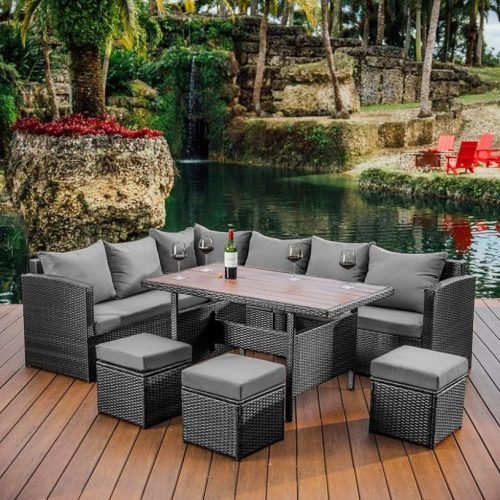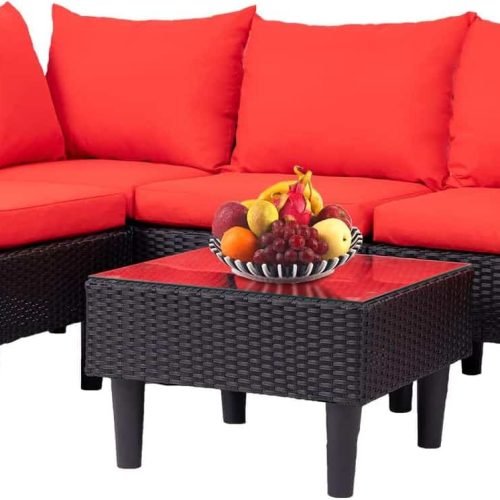Truthfully most lawns need about one inch of water a week to thrive1? Its JV Charles here and keeping your lawn healthy can be tough. So tough at times. You might face weeds, pests, and more. But don’t worry, we’re here to help! We’ll show you how to solve the top 5 lawn problems. I think you will like this little blog we have got for you!
Key Takeaways
- Discover the top 5 common lawn problems, including crabgrass, dandelions, yellow nutsedge, compacted soil, and improper aeration.
- Learn effective solutions for each issue, from organic and chemical treatments to best lawn care practices.
- Gain insights from experts on diagnosing problems and implementing the right strategies for a lush, thriving outdoor space.
- Understand the importance of annual aeration, proper fertilization, and regular lawn inspection for maintaining a healthy lawn.
- Explore the benefits of using Pennington Ultragreen products, registered trademarks of Pennington Seed, Inc., for optimal lawn care.
Crabgrass: The Unwanted Annual Weed
Crabgrass is a common problem for many lawn lovers. It grows well in compacted lawns and clay soil2. It spreads fast, pushing out other grasses2. Too much nitrogen fertilizer makes it grow even more, making it hard to control.
Solutions
There are good ways to fight crabgrass without chemicals. Using corn gluten meal for 3 years can get rid of crabgrass completely2. Early spring pre-emergent herbicides can stop crabgrass before it starts2. For young plants, pulling them out works, but don’t compost them. Vinegar-based sprays can spot-treat leaves, but won’t kill the roots2.
Pre-emergent Herbicides
When using pre-emergent herbicides, timing is key. Apply them 2 weeks before the last spring frost, when soil is 52°F2. Rain helps the product work better2. But, you can’t use them if you’re going to overseed, as they harm good grass too2.
Post-emergent Measures
For big crabgrass problems, you need post-emergent herbicides2. But, they’re not as good and should be used late summer2. The best way is to overseed in the fall. This makes a strong lawn that can beat crabgrass2.
| Crabgrass Prevention and Control | Effectiveness | Timing |
|---|---|---|
| Corn Gluten Meal | Up to 100% elimination over 3 years | Apply annually in early spring |
| Pre-emergent Herbicides | Kills crabgrass before germination | Apply 2 weeks before last spring frost, when soil reaches 52°F |
| Manual Removal | Effective for young crabgrass plants | Remove as soon as plants appear |
| Vinegar-based Herbicides | Spot-treats leaves but doesn’t kill roots | Apply as needed throughout the season |
| Post-emergent Herbicides | Less effective on established crabgrass | Use by late summer before frost |
| Overseeding | Establishes a thick, competitive lawn | Overseed bare/thin areas in the fall |
Dandelions: The Perennial Flowering Weed
Dandelions are a common weed that can outcompete healthy grass if not managed3. They have deep taproots and spread quickly through seeds3. These yellow flowers may look harmless but can quickly take over a lawn if not stopped.
Problem
Dandelions appear in early spring or when the soil warms up3. In a 30-week growing season, you’ll see three generations of dandelions3. Each flower head has up to 200 yellow florets, and each head is 1 to 2 inches wide4.
A single dandelion seed head has about 250 seeds, all light enough to be carried by the wind4. A single plant can produce around 15,000 seeds that sprout in as little as 7 days4. This makes dandelions hard to manage, as they can quickly spread over a lawn.
Solutions
Controlling dandelions without chemicals means digging them out, root and all, with a special tool3. In the fall, using selective herbicides can kill dandelions without harming grass3. Herbicides like 2,4-D, dicamba, or MCPP can destroy the taproot to stop regrowth4.
The best time to spray dandelions is in the fall, when they channel nutrients into their roots4. Keeping your lawn thick and healthy is key to stopping dandelions3. Mulching, not collecting grass clippings, mowing high, and growing a healthy lawn can prevent dandelions from coming back4.
Professional lawn care services, like TruGreen, offer treatments to prevent dandelions and other weeds3. Picking dandelions can help reduce seeds, aiding in their elimination3. However, manual weeding is hard because of the plant’s deep taproot4.
Using pre-emergent herbicides in spring can stop dandelion seeds from sprouting4. Chelated iron FeHDTA weed killers are highly effective for spot spraying dandelions5. Dimension (ai: Dithiopyr) is labeled for dandelion control as a pre-emergent5.
Yellow Nutsedge: The Tricky Sedge Weed
Yellow nutsedge (Cyperus esculentus) is a common weed found in many parts of the world6. It’s a perennial weed that can take over lawns. It has a unique triangular stem and grows fast, outdoing the grass6. To manage it, you need to know how it grows and reproduces.
The Problem
Yellow nutsedge grows in clumps, reaching 6 to 24 inches tall6. It thrives in hot weather and emerges in lawns during the summer, often in June6. Its underground tubers are hard to get rid of, making it a tough weed to control6.
The Solution
To control yellow nutsedge, you need a few strategies. Pre-emergent herbicides like Pennant Magnum can stop new plants from growing6. But, other pre-emergents like Freehand and Snapshot are not safe for lawns6.
Removing young plants in the spring can help, but it’s not a lasting solution6. For bigger problems, use selective post-emergent herbicides like Halo 5WDG6. These target nutsedges without harming the lawn. A surfactant helps the herbicide reach the weed’s glossy surface6.
For severe cases, get help from a local lawn care expert6. They can suggest the best treatments for large infestations. With the right approach, you can get rid of yellow nutsedge and restore your lawn.
Compacted Soil and Improper Aeration
Compacted soil and poor aeration make it easy for weeds to grow, but hard for grass to thrive7. Aeration is key for a healthy lawn and fighting off diseases7. Aerating every 1-2 years helps loosen the soil, letting air and water reach the roots, making the lawn thick and lush8.
Soil compaction is a big problem, especially in Lehigh Valley clay soils7. It leads to bare spots that ruin the lawn’s look and health7. For a healthy lawn, soil should have 50% solids, 25% water, and 25% air8. Aerating properly means making holes 2 to 3 inches deep and more per square foot to help roots breathe and drink8.
Lawn diseases, insects, and weeds can also cause bare spots and unhealthy turf7. By treating these problems and taking preventative steps, homeowners can keep their lawn looking great and weed-free7.
Conclusion
Maintaining a healthy, beautiful lawn is key. It involves tackling problems like crabgrass, dandelions, and soil compaction9. Homeowners can use organic and chemical controls and follow good lawn care practices910.
In places like Dallas, TX, the climate and environment are different10. A detailed lawn care plan is needed. This includes fighting brown patches, weeds, and fungal diseases with the right steps10.
Even tough lawns can be fixed with the right effort910. Homeowners who stay informed and proactive can have a lush lawn. This not only makes their property look better but also creates a great outdoor space910.
FAQ
What are the top 5 common lawn problems and how can we fix them?
The top 5 lawn problems include crabgrass, dandelions, yellow nutsedge, compacted soil, and poor aeration. To solve these, we can use organic and chemical treatments. Also, following best lawn care practices like mowing and watering helps.
How can we get rid of crabgrass in our lawn?
Crabgrass loves compacted lawns and clay soil. Corn gluten meal can kill up to 100% of crabgrass over 3 years. Spring application of crabgrass preventers also works.
For young crabgrass, pull it out by hand. Avoid composting it. Vinegar-based herbicides can spot-treat leaves but won’t kill the roots.
What is the best way to control dandelions in our lawn?
Dandelions are a common weed that can harm healthy grass. Digging out the plant, root and all, is a non-chemical method. In the fall, selective herbicides can kill dandelions without harming grass.
Keeping your lawn thick and healthy is key to stopping dandelions.
How do we deal with yellow nutsedge, a troublesome sedge weed?
Yellow nutsedge is a weed that outcompetes grass. Pulling young plants in spring can help, but they will grow back. For large infestations, selective herbicides are needed.
For severe problems, it’s best to consult a local expert.
What can we do about compacted soil and improper aeration in our lawn?
Compacted soil and poor aeration let weeds thrive and harm grass. Aerating every 1-2 years helps. It improves soil and supports a healthy lawn.
Source Links
- https://www.pennington.com/all-products/grass-seed/resources/how-to-fix-common-lawn-problems – How to Fix the Most Common Lawn Problems
- https://www.preen.com/learn/lawn-garden-tips/weed-control/get-rid-of-weeds/how-to-tackle-crabgrass-in-the-lawn-garden/ – How to Tackle Crabgrass in the Lawn & Garden
- https://www.architecturaldigest.com/reviews/lawn/how-to-get-rid-of-dandelions – How to Get Rid of Dandelions for Good | 2024 Guide
- https://lawnlove.com/blog/remove-dandelions/ – How to Treat Dandelions in Your Yard
- https://www.thelawnforum.com/threads/dandelions-pet-lawn-safe-weed-killer.27897/ – Dandelions — Pet & Lawn Safe Weed Killer?
- https://info.supersod.com/problem-management/how-to-get-rid-of-yellow-nutsedge – How to Get Rid of Nutsedge Weeds | Weed Control
- https://www.joshuatreeexperts.com/blog/common-lawn-problems-how-to-fix-them – 6 Common Lawn Problems and How to Fix Them
- https://www.almanac.com/how-fix-10-common-lawn-problems – How to Fix 10 Common Lawn Problems
- https://diylawnexpert.com/quick-fixes-11-common-lawn-problems/ – Quick Fixes For the 11 Most Common Lawn Problems – DIY LAWN EXPERT
- https://granulawnofdallas.com/2024/blog/lawn-care-tips/5-common-lawn-problems-solutions-dallas-tx/ – 5 Common Lawn Problems and Solutions in Dallas, TX






